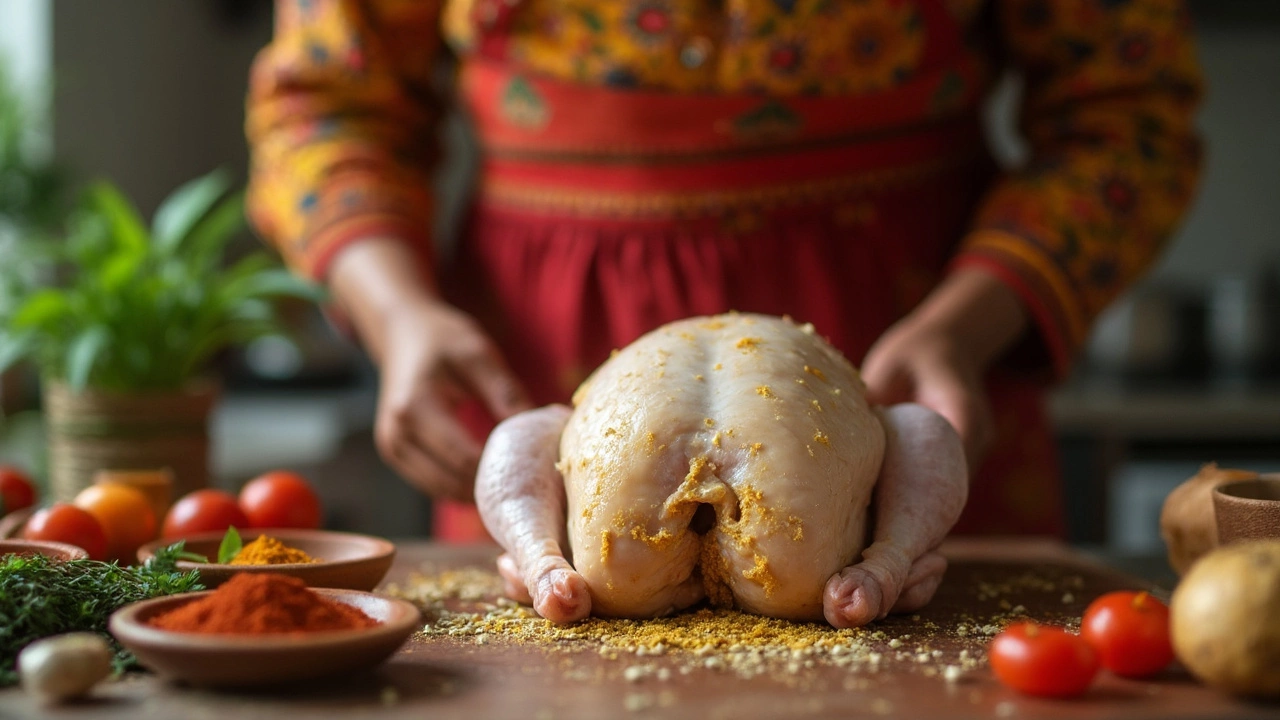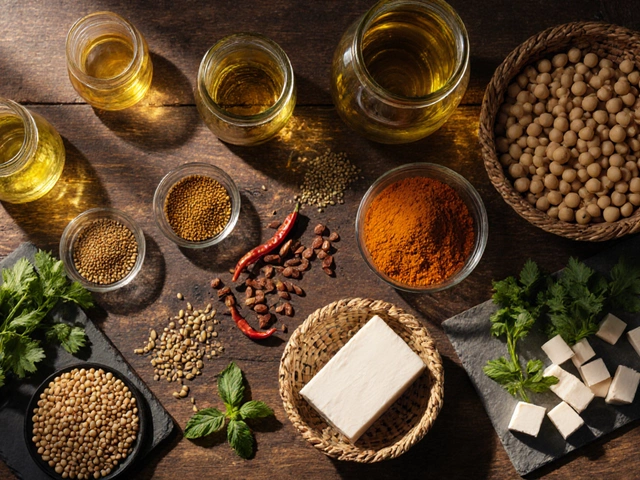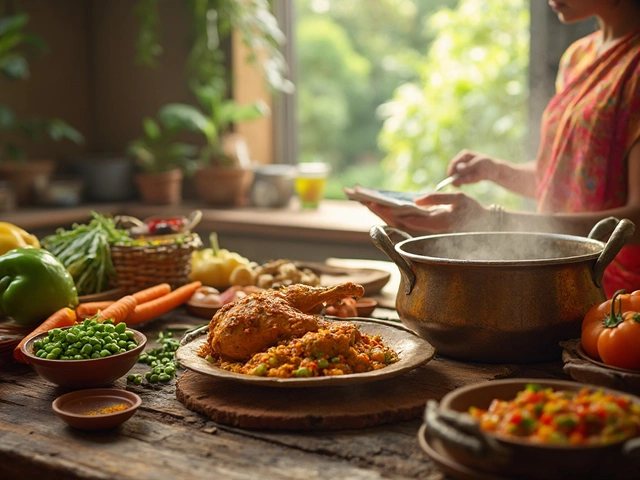You grab that chicken, getting ready for your favorite tandoori marinade, and notice weird yellow stuff around its mouth or beak. Grossed out? Wondering if you should still cook it? You’re not the only one who’s done a double take at something funny-looking before dinner prep.
This yellow gunk can pop up in raw whole chickens, especially if you buy them fresh or from a butcher. Most of the time, it’s just leftover tissue, fat, or sometimes a harmless pigment from the skin and mouth area. But you can’t always assume it’s okay—sometimes it points to bad storage or a chicken that wasn’t in tip-top shape when processed.
Don’t brush it off or just rinse and hope for the best. Some types of yellow slime, especially if they’re smelly or sticky, can mean spoilage or infection. A quick check could save your meal—and your stomach—from disaster.
- Spotting the Yellow Stuff: What Is It?
- Is It Safe to Eat? Safety Facts You Should Know
- What Causes Yellow in Chicken Mouths?
- Cleaning and Prepping: Step-by-Step
- Tips for Getting the Best Chicken for Tandoori
- Bonus: What Real Cooks Do When They Notice Something Off
Spotting the Yellow Stuff: What Is It?
Getting up close with your chicken and spotting yellow gunk is not what you plan for when making tandoori chicken. So what’s actually going on with this weird yellow stuff in the mouth or around the beak?
In most cases, this yellow color comes from natural chicken fat or leftover pigments in the skin. Sometimes it’s extra tissue from the slaughter process that didn’t get removed. Supermarket chickens, especially fresh ones or those sold whole, can have small bits of fat or yellow skin left—nothing wild, but it looks odd if you’re not used to it.
There’s a big difference between this natural yellow and stuff that signals a real problem. If the yellow is slimy, sticky, has a bad smell, or looks kind of like pus, it might mean the chicken wasn’t healthy or fresh. It can even be signs of disease or spoilage. Trust your senses: look, sniff, and feel. Natural fat doesn’t smell funky. Spoiled chicken smells like sulfur, rot, or something sour.
Here’s a quick breakdown to help:
| Yellow Appearance | Likely Cause | Safe? |
|---|---|---|
| Thin, smooth, odorless, feels fatty | Natural fat or pigment | Usually yes |
| Sticky, gooey, strong smell | Spoilage or infection | No |
| Yellow spots with swelling or pus | Possible disease (like canker) | Definitely no |
If you’re not sure, it’s safer to toss that chicken than risk food poisoning. Most good butchers will trim or remove extra fat, but you might have to do some of the cleanup yourself when cooking at home.
So, next time you spot yellow stuff before you marinate for tandoori, double-check what you’re working with. Quick checks now make for a better meal later.
Is It Safe to Eat? Safety Facts You Should Know
The first question on your mind is probably: can I still cook and eat this chicken? When you spot yellow stuff in chicken mouth, not all cases are dangerous, but you need to be careful because some signs scream “don’t risk it.”
Most yellow residue is normal leftover fatty tissue or a pigment from the skin—basically harmless and common with certain breeds or feed. In processed chickens, a little yellow hue in the skin or mouth area can just mean they were corn-fed. But yellow goo, especially if it’s sticky, thick, or accompanied by a sour smell, is a big red flag. That’s when you should stop and do more checks before making it into dinner.
Here’s what to look out for to keep things safe:
- If it smells rotten, sour, or even slightly off, do not use the chicken.
- Sticky, slimy texture is a classic sign of bacterial growth.
- Mucus or pus-like goo in the mouth or throat part is not okay. It usually means infection or bad handling before it got to you.
Never ignore anything unusual, even if you want to just wash it away. Undercooked or spoiled chicken is one of the most common causes of food poisoning at home. According to the CDC, about 1 in 25 packages of raw chicken contain Salmonella, which can be deadly if not handled properly.
| Sign | What It Means | What To Do |
|---|---|---|
| Mild yellow fat or skin | Normal, often from feed | Trim if desired |
| Yellow, sticky, or smelly goo | Bacterial growth or infection | Discard chicken |
| Pus around mouth | Poor handling, disease | Don’t cook or serve |
If you’re unsure, play it safe. No tandoori chicken is worth a trip to the ER. When in doubt, toss it out. And always wash your hands and any surfaces that touch raw chicken, just in case.
What Causes Yellow in Chicken Mouths?
So, why does your chicken have yellow stuff in its mouth anyway? The answer depends a lot on where it came from and how it was processed. The most common reason is leftover fat and skin pigments. Chickens can have yellowish fat deposits, especially if they’ve been fed certain grains like corn. This isn’t usually anything to stress about, and it doesn’t mean the chicken is unsafe if it smells normal and looks fresh elsewhere.
There’s also something called xanthophyll, a natural plant pigment that can build up in a chicken’s skin and tissues. Farms that use feeds high in corn or marigold petals can end up with chickens that have more yellow coloring, especially around the mouth and beak. This pigment is harmless, but it can make your bird look a bit odd if you’ve never seen it before.
But here’s the thing: not every yellow patch is safe. If you see yellow slime or sticky goo instead of a simple color change, this could signal something wrong. Yellowish discharge might happen if a chicken had an infection called "canker" or is suffering from spoilage caused by bacteria. Here’s a quick breakdown of what you might see and what it could mean:
| Yellow stuff type | What it usually is | Should you worry? |
|---|---|---|
| Firm, dry yellow fat | Natural fat or pigment | No |
| Yellowish skin tinge | Feeds with pigments (like xanthophyll) | No |
| Wet, slimy, or smelly yellow gunk | Spoilage, infection, or improper storage | Yes! Don’t use |
One thing to keep in mind: processed chickens from major grocery chains usually have less of this yellow stuff because of how they’re cleaned and trimmed. If you buy directly from a farm or a small butcher, it’s more common to see. Either way, trust your senses. If it smells weird, feels sticky, or leaves yellow residue on your fingers, toss it. No recipe, not even a killer tandoori chicken recipe, is worth the risk.

Cleaning and Prepping: Step-by-Step
Let’s get straight to it: if you spot yellow stuff in your chicken’s mouth (or anywhere else you didn’t expect), don’t just shrug and power through your tandoori recipe. You want to prep your chicken so it’s clean, safe, and ready to soak up all those flavors.
Here’s how to handle it, step by step:
- Examine the Chicken Thoroughly: Look closely inside and around the mouth, beak, and throat area. If the yellow stuff is firm and dry, it’s likely just natural fat or a bit of pigment. If it’s slimy, sticky, or smelly, that’s not normal.
- Remove What You Can: Use clean kitchen scissors or a small knife to trim away any yellow residue, clumps, or odd tissue. Toss these bits in the trash right away to keep your prep area tidy.
- Rinse Under Cold Water: Give the area a good rinse under cold running water. This is the time to be picky—if any yellow gunk remains, gently scrape or pick it out.
- Pat Dry with Paper Towels: Don’t put a wet chicken in your marinade. Take a few pieces of paper towel and blot until it’s as dry as possible.
- Double-Check for Smell: Chicken should smell fresh, not sour or sulfur-like. Trust your nose. If something smells off, play it safe and don’t use that chicken.
"No recipe will save spoiled chicken. Look, smell, and feel—use all your senses before you season." —Culinary Institute of America
If you’re super cautious, you’ll want to disinfect your sink and cutting boards after raw poultry touches them. Cross-contamination ruins lots of meals and can even make you sick.
| Step | Time Needed | Purpose |
|---|---|---|
| Inspection | 1-2 minutes | Spot yellow residue and any spoilage signs |
| Trimming | 2-3 minutes | Remove questionable tissue |
| Rinsing & Drying | 2-3 minutes | Clean and prep for marinade |
Want a hot tip? If you’re aiming for restaurant-style tandoori, keep that chicken as dry as possible after cleaning. Marinades stick better and your crust gets crispier in the oven or on the grill.
Always wash your hands and utensils with soapy water after touching raw chicken. Salmonella and other bacteria don’t care about your dinner plans.
Taking a few extra minutes on this step makes all the difference when you’re cooking top-notch tandoori chicken at home.
Tips for Getting the Best Chicken for Tandoori
If you want killer tandoori chicken, it all starts with picking the right bird. Don't just go for what's cheap or easy—quality makes a huge difference to flavor and texture. Here’s what actually matters when you’re picking chicken for tandoori:
- Yellow stuff in chicken mouth: If you spot yellow residue, especially around the mouth or beak, check for any weird smell or sliminess. A clean, neutral smell is always a green light. Anything sour or "off" means walk away.
- Freshness: The fresher the chicken, the juicier your tandoori will turn out. Check the wings and thighs; the meat should spring back a bit when you press it. Slimy or sticky skin is a red flag.
- Skin and Color: The skin should look moist but not wet, and shouldn't have gray or green patches. A bit of yellow tint is normal in some breeds, especially free-range, but nothing crusty or weird.
- Whole or Cuts?: For full flavor, many go with a whole chicken cut into pieces. If you buy parts, stick with bone-in—bones keep things juicy during high-heat cooking.
- Label Smarts: Organic and free-range labels don’t always mean better, but they do mean the bird can have better muscle structure and taste, especially when charred in a tandoor or oven.
If you’re shopping at the store, grab the coldest chicken in the case—ideally below 40°F (about 4°C). Still not sure? Here are a few quick stats to back up these choices:
| Quality Check | Why It Matters |
|---|---|
| Temperature < 40°F (4°C) | Stops bacteria growth that ruins meat |
| Meat springs when pressed | Signals good freshness and tenderness |
| No sticky feel, no sour smell | Best sign chicken is safe to eat |
Got chicken that looks or smells even a little funky? Don’t risk it. Trust your senses—taste isn’t worth a foodborne stomach nightmare. And always prep your chicken by patting it dry and trimming any odd bits before marinating so the spices stick better and soak in fully. Good prep equals better tandoori, every time.
Bonus: What Real Cooks Do When They Notice Something Off
Even seasoned home cooks get weirded out by suspicious-looking chicken now and then. So, what do pros actually do when they spot yellow stuff or anything else funky in the chicken’s mouth? They don’t just ignore it—here’s what usually happens in real kitchens.
The first move: they trust their senses. If the chicken smells sour, feels sticky, or looks gray or green along with that yellow stuff, that’s a big red flag. According to the USDA, spoilage bacteria can produce slime and off-odors even if you don’t see any mold.
“When in doubt, throw it out. It’s just not worth the risk of food poisoning,” says Chef Priya Sethi, who trains kitchen staff at a popular Indian restaurant in Chicago.
If the yellow stuff looks more like fat or pigment (it’s soft, pale, and without any weird smell), the pros just trim it away. They use a sharp knife and clean cutting board—never trying to rinse away goopy or smelly stuff, because that just spreads bacteria around the sink.
- Look for clear signs of spoilage: strong odor, slimy texture, or green/gray color.
- If it’s just fat or tissue, cut it out and discard it. Wash your hands and knife after.
- Never cook chicken that smells or feels off. Better safe than sorry.
- Sanitize surfaces and hands before you continue the yellow stuff in chicken mouth investigation.
Food safety stats back this up. Check out how foodborne illness cases stack up by type:
| Source | % of Food Poisoning Cases |
|---|---|
| Poultry (including chicken) | 19% |
| Leafy Greens | 22% |
| Eggs | 7% |
| Fish | 17% |
When in doubt, toss it out. The flavor of your tandoori isn’t worth a trip to urgent care. And trust me, food pros would agree: trust your eyes, nose, and instincts every single time.











